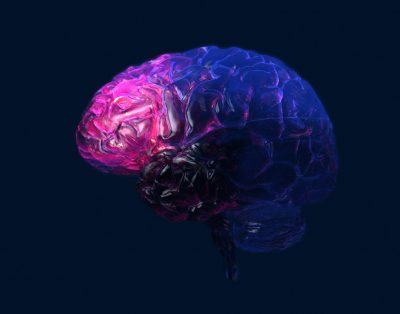
Intracranial EEG Activity and Consciousness in Frontal Lobe Seizures
October 1, 2025
By Hai Chen, MD, PhD
Synopsis: Frontal seizures were classified as focal preserved consciousness (FPC), focal impaired consciousness (FIC), or focal to bilateral tonic-clonic (FBTC). Intracranial electroencephalogram (icEEG) recording was analyzed in those seizures. FPC seizures showed significant icEEG power increases in the seizure-onset region across frequency ranges, with smaller increases in other regions. FIC seizures demonstrated a significant increase in icEEG power not only within the seizure-onset zone but also across distal cortical regions. Widespread power increases also were noted in FBTC seizures. In addition, the power increase in FBTC is much greater compared to FIC seizures.
Source: Salardini E, Vaddiparti A, Kumar A, et al. Relationship between brain activity and impaired consciousness in frontal lobe seizures. Neurology. 2025;105(6):e213965.
Consciousness arises from the coordinated activity of widespread bilateral cortical networks modulated by subcortical arousal systems. Impaired consciousness is a common clinical manifestation in epilepsy that significantly affects patient safety and quality of life. In temporal lobe epilepsy (TLE), studies suggest that at least two mechanisms may contribute to impaired consciousness. However, there is limited information on mechanisms of impaired consciousness in frontal lobe epilepsy (FLE).
Frontal seizures captured during intracranial monitoring were identified across three epilepsy centers. Based on behavior manifestations, the seizures were classified into three groups: focal seizures with spared behavioral responses (focal preserved consciousness, FPC; n = 24), focal seizures with impaired behavioral responses (focal impaired consciousness, FIC; n = 27), and focal to bilateral tonic-clonic seizures (FBTC; n = 14). The intracranial electroencephalogram (icEEG) data then were processed using MATLAB for each seizure, and the signal power was computed across the following frequency bands: delta, theta, alpha, beta, and gamma.
In a typical frontal FPC seizure, icEEG recordings showed a localized onset of rhythmic spikes in the frontal lobe, followed by partial spread to other ipsilateral cortical regions. Analysis of the icEEG revealed an increase in signal power within the ipsilateral frontal lobe at seizure onset, with some extension to ipsilateral extra-frontal regions. Notably, there was no significant increase in signal power observed in the contralateral hemisphere.
A frontal FIC seizure originates in the frontal lobe and then evolves into ictal activity of mixed frequencies in widespread cortical regions. Analysis of the icEEG signal showed increased signal power across all measured frequency bands and in widespread cortical regions, both ipsilateral and contralateral to the seizure-onset zone. Within the ipsilateral frontal lobe, the overall increase in icEEG signal power was comparable between FPC and FIC seizures (40.6% and 52.9%, respectively). However, frequency-specific analysis revealed that gamma power was significantly greater in FIC seizures than in FPC seizures in the seizure-onset region. Outside of the seizure-onset zone, the increase in signal power was substantially more pronounced in FIC seizures (40.4%) than in FPC seizures (10.7%). Additionally, signal power increases in FIC seizures were significantly greater than in FPC seizure across most frequency bands (specifically delta, alpha, beta, and gamma) except in the theta band, where no significant difference was observed.
Lastly, a typical frontal FBTC seizure begins with an initial burst of high-amplitude polyspikes in the frontal lobe, followed by rapid high-amplitude spread to extra-frontal regions. This then evolves into diffuse high-amplitude irregular polyspikes and rhythmic polyspike wave discharges until seizure termination. Analysis of the icEEG signal revealed a dramatic increase in signal power in both ipsilateral frontal lobe and other widespread cortical regions. Specifically, the increase in signal power in FBTC seizures was significantly greater than in FIC seizures, both at the seizure-onset zone (608.9% vs. 52.9%) and in other widespread cortical regions (637.2% vs. 40.4%). Furthermore, FBTC seizures were associated with significantly greater icEEG power than FIC seizures across all measured frequency bands, indicating a more intense cortical engagement.
Commentary
In TLE, impaired consciousness typically is associated with increased slow-wave activity in the cortex, reflecting cortical deactivation. Unlike typical patterns limited to slow delta activity, in TLE frontal lobe FIC seizures exhibited widespread icEEG power increases across multiple frequency bands in both hemispheres. This suggests that, unlike the indirect suppression of subcortical arousal system in TLE, FIC seizures may directly disrupt widespread neocortical networks involved in maintaining consciousness. However, in FPC seizures, the increase in icEEG signal power largely is restricted to the seizure-onset zone within the frontal lobe, with minimal spread to other regions. This more localized cortical involvement may explain the preservation of awareness observed in FPC seizures.
Both frontal FIC and FBTC seizures exhibit widespread increases in icEEG activity across multiple frequency bands and cortical regions. However, the magnitude of these increases is substantially greater during FBTC seizures. These findings suggest the physiologic severity of ictal activity correlates with the severity of seizure manifestations, including degree of impaired consciousness.
Impaired consciousness has a significant negative effect on the quality of life of patients with epilepsy. This study provides quantitative evidence of widespread increases in icEEG activities associated with impaired consciousness during frontal lobe FIC and FTBC seizures. These physiological findings may inform the development of therapeutic strategies aimed at preserving consciousness during frontal seizures.
Hai Chen, MD, PhD, is Assistant Professor of Clinical Neurology, Weill Cornell Medical College.